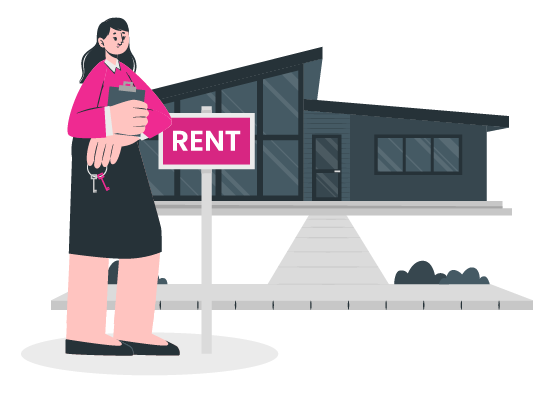Understanding the factors that influence rent pricing is crucial for both landlords and tenants in Ireland’s dynamic property market. Whether you’re a property owner aiming to optimise rental income or a tenant seeking affordable housing, being informed about these market signals can help you navigate the rental landscape effectively.
1. Supply and Demand Dynamics
The fundamental economic principle of supply and demand plays a pivotal role in determining rent prices. In Ireland, particularly in urban centres like Dublin, the demand for rental properties often outpaces supply. For instance, in early 2024, Dublin’s rental market saw rents increase by 2.5% compared to the previous year, with the average open-market rent nationwide at €1,836 per month, marking a 4.9% year-on-year increase.
This imbalance leads to higher rents, especially in areas with limited housing availability. The scarcity of rental properties can be attributed to factors such as a decline in apartment construction and landlords exiting the market due to financial pressures.
2. Government Policies and Rent Controls
Government interventions, such as rent pressure zones (RPZs), significantly impact rent pricing. Currently, RPZs limit annual rent increases to 2%, aiming to protect tenants from excessive rent hikes.
However, these controls can also affect the supply side of the market. Some landlords argue that such caps discourage investment in rental properties, leading to a reduction in the overall rental stock.
3. Economic Factors and Employment Trends
The broader economy and employment trends directly influence rent pricing. In Ireland, a strong economy and low unemployment rates attract both domestic and international workers, increasing the demand for rental housing. For example, a 20.5% increase in work permits issued in the first half of 2024 compared to the same period in 2023 indicates a growing need for rental properties in major cities citeturn0search2.
Additionally, multinational companies expanding their operations in Ireland contribute to this demand, as employees relocating for work seek accommodation in urban areas.
4. Property Features and Location
The specific characteristics of a property, including its size, condition, and location, can significantly affect its rental price. Properties in desirable locations with good transport links, amenities, and low crime rates often command higher rents. Furthermore, properties with modern features, energy-efficient systems, and high-quality finishes are more attractive to tenants and can justify higher rental rates.
5. Rental Yield and Investment Returns
For property investors, understanding rental yields is essential. In Ireland, the average gross rental yield stands at 7.76% as of Q4 2024. This figure varies by location and property type, with urban areas like Dublin and Cork offering competitive yields compared to other European cities.
Higher rental yields often attract more investors to the market, which can influence rent prices. However, if yields decrease due to rising property prices or increased costs, some investors may exit the market, potentially leading to a reduction in rental supply.
6. Demographic Shifts and Migration Patterns
Changes in population demographics and migration patterns also impact rent pricing. Ireland has experienced significant net migration, with over 79,000 people moving to the country by April 2024 citeturn0search2. This influx increases demand for rental properties, particularly in urban centres where job opportunities are concentrated.
Additionally, shifts in household composition, such as more individuals choosing to rent rather than buy, can alter demand dynamics and influence rent levels.
7. Utilising FindQo.ie’s Rental Estimate Tool
To navigate these market signals effectively, landlords and tenants can benefit from tools like FindQo.ie’s Rental Estimate Tool. This resource provides insights into current market trends, helping users estimate rental prices based on property type, location, and other relevant factors. By leveraging such tools, individuals can make informed decisions regarding rental pricing and investment opportunities.
Rent pricing in Ireland is influenced by a complex interplay of market signals, including supply and demand dynamics, government policies, economic factors, property characteristics, investment returns, and demographic trends. By understanding these factors, landlords can optimise their rental income, and tenants can make informed choices about where to live.
For a more accurate estimate of your property’s rental value, consider using FindQo.ie’s Rental Estimate Tool. This tool can assist you in understanding how current market conditions may affect your rental pricing decisions.

